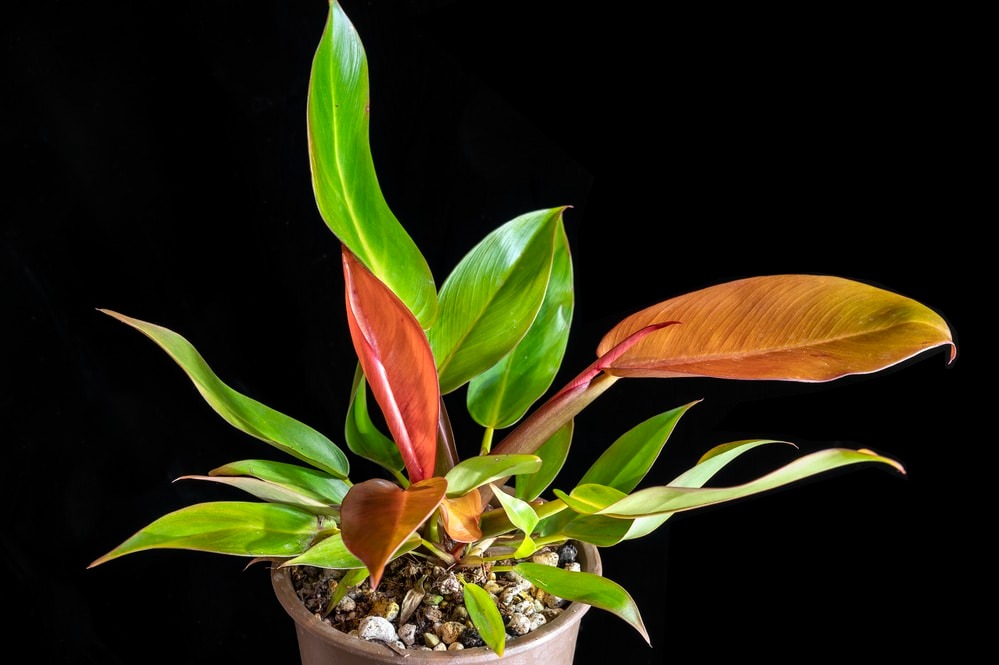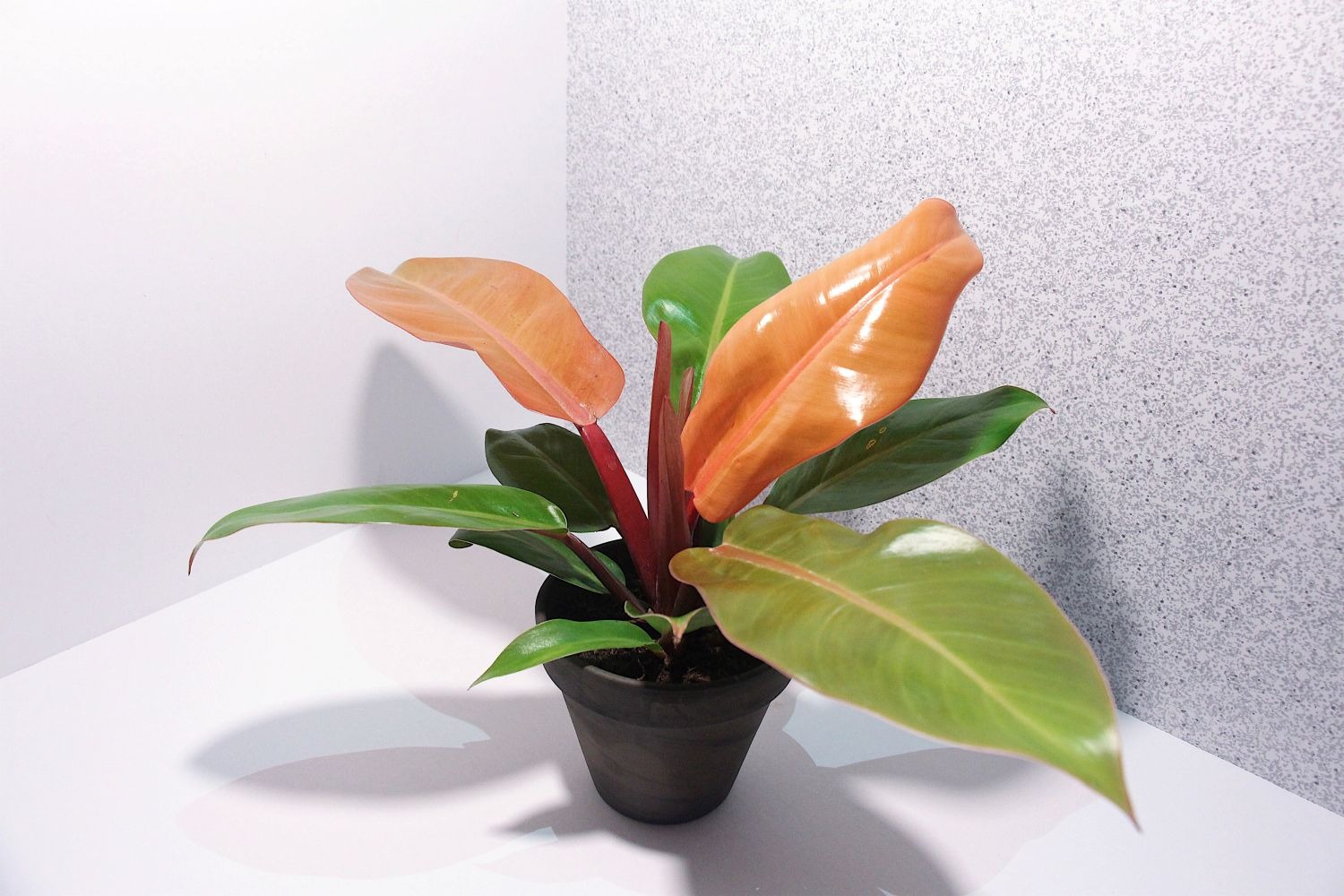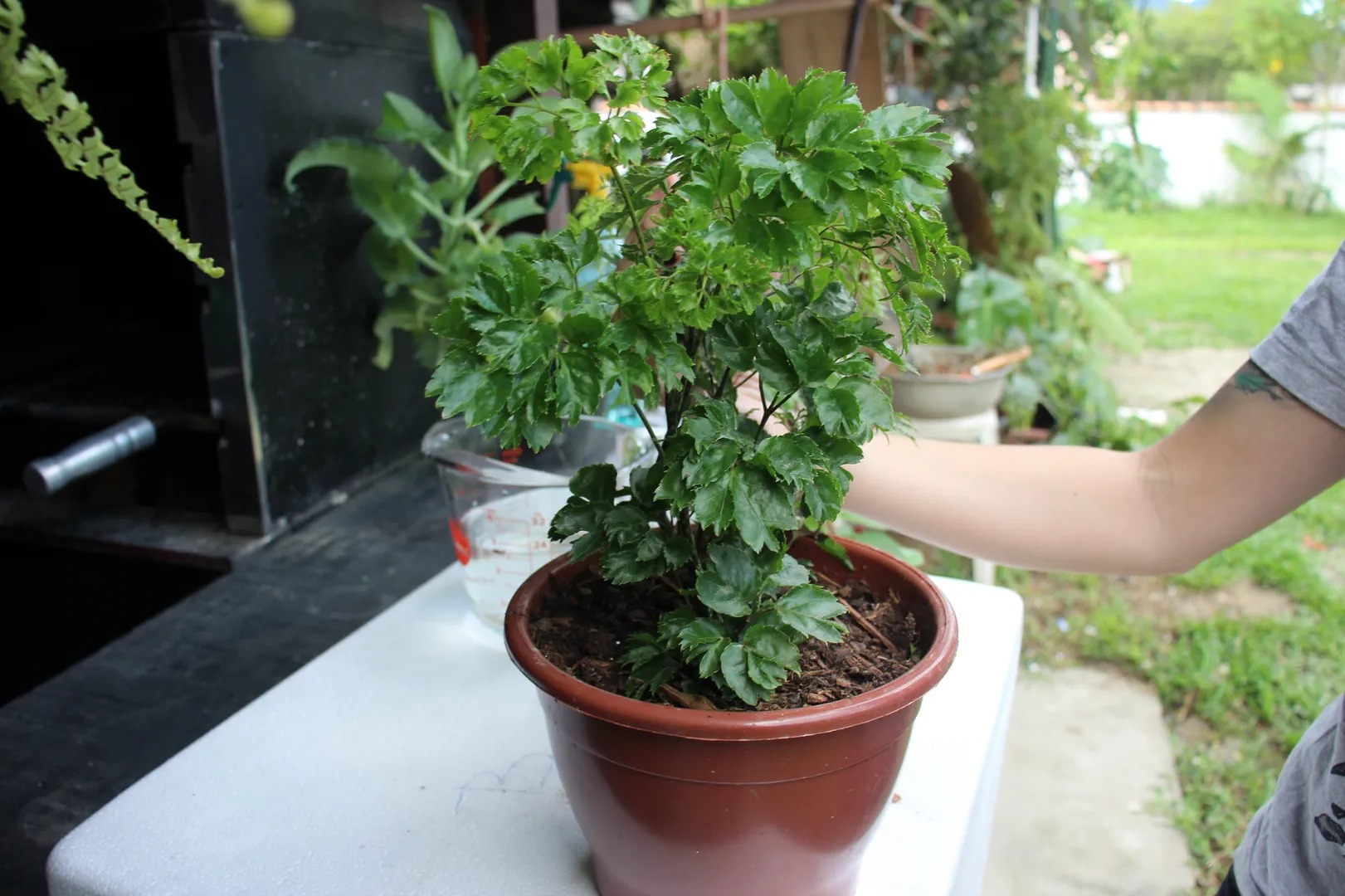The bright orange leaves unfold from Philodendron ‘Prince of Orange’ – an awesome hybrid from a family of low-maintenance plants. The new orange foliage turns green as the plant matures. You can help this Philodendron grow new colorful leaves by giving it a lot of indirect sunlight.
Unlike its arboreal relatives, this striking Philodendron hybrid does not climb. It is a lumpy plant that grows from a Rosette hugging the ground. The short, erect stems bear large, thick leaves. It will be about 2 feet tall and about as wide. The good news is that Philodendron ‘Prince of Orange’ does not need to be staked. But if it gets too long, you can cut off some of the stems to keep the plant in shape. Large-leaved plants tend to be dust collectors. Keep them clean by gently wiping them with a soft, damp cloth.
Problems, solutions and answers
Wondering when to repot?
Move the young plants to a pot 2.5 to 5 cm (1 to 2 inches) longer every year or every two years. Do not overwater – a common mistake with indoor plants. Why? Too large a container contains too much water, which can lead to root rot. It is best to use a pot with drainage holes so that you can water thoroughly without drowning your plant.
Do you want to use a decorative container without drainage holes? Use it as a pot cover-just slide the simple kindergarten pot into the pot cover to cover it. I placed small stones in the bottom of the pots to keep the inner pot above the drainage water.
Philodendron “Prince Of Orange”

The bright orange leaves unfold from Philodendron ‘Prince of Orange’ – an awesome hybrid from a family of low-maintenance plants.
The new orange foliage turns green as the plant matures. You can help this Philodendron grow new colorful leaves by giving it a lot of indirect sunlight.
Philodendron Prince of orange
Unlike its arboreal relatives, this striking Philodendron hybrid does not climb. It is a lumpy plant that grows from a Rosette hugging the ground. The short, erect stems bear large, thick leaves. It will be about 2 feet tall and about as wide. The good news is that Philodendron ‘Prince of Orange’ does not need to be staked. But if it gets too long, you can cut off some of the stems to keep the plant in shape.
Large-leaved plants tend to be dust collectors. Keep them clean by gently wiping them with a soft, damp cloth.
Here are the steps to repot indoor plants:
Is something annoying your plant?

New leaves, spotted with yellow and wrinkled, are a sign of aphids. These juice-sucking insects strike plants with soft and new growth. Rinse the leaves with warm water, then treat your plant with insecticidal soap. The philodendrons seem to shake off the aphids once they have been treated. Aphids usually only affect plants that have been in the open air.
Peat pot mixes kept moist can attract fungal mosquitoes. They are difficult to detect because they are black and crawl on the ground. These are more common indoors. and fortunately easier to eliminate.
Is this Philodendron harmful?
Yes, all parts of the plant are harmful and the juice can cause skin irritation. Keep the plant out of the reach of children, cats and dogs.
Philodendron ‘Prince of Orange’ care tips
Origin: Artificial hybrid of Philodendron spp. from Central and South America
Height: 2 feet (60 cm)
Light: Although Philodendron ‘Prince of Orange’ tolerates lower light intensities, its leaves retain their color better in bright light. Keep your philodendron plant in a bright place, but not in direct sunlight, which can burn its leaves. It also grows under fluorescent light, which makes it an ideal office plant.
Water:

Pour carefully, then let the surface dry before watering again. In winter, when growth is slower, water sparingly, but do not let the middle of the pot dry out. Yellow leaves are often caused by excessive watering. Never allow the potting medium to become damp, which can suffocate the roots and lead to root rot; the roots also need air. Don’t forget to always use warm water for your indoor plants, because cold water is a surprise for these heat-loving tropics.
Humidity: Try to maintain a relative humidity of 50% or more. The indoor air can become extremely dry in winter. It’s a good idea to use a hygrometer instead of guessing. The most effective way to increase room humidity for tropical plants is to place a cooling mist humidifier near your plant. The brown tips of the leaves are a symptom of dry air.
Temperature: Medium to Hot ambient temperature (70-85°F / 21-29°C) all year round. Keep this tropical plant away from cold surprises from windows and doors and heat/climate openings. It tolerates a Minimum of 60°F / 16°C.
Soil: mixture based on peat moss with the addition of perlite or vermiculite for good drainage. The African violet pot mix is ideal.
Fertilizer: Feed Philodendron ‘Prince of Orange’ every month from spring to autumn with a balanced liquid or water-soluble fertilizer for indoor plants. Feed every 2 months in winter, when growth is slower.
Propagation: can be grown from cuttings in spring.



